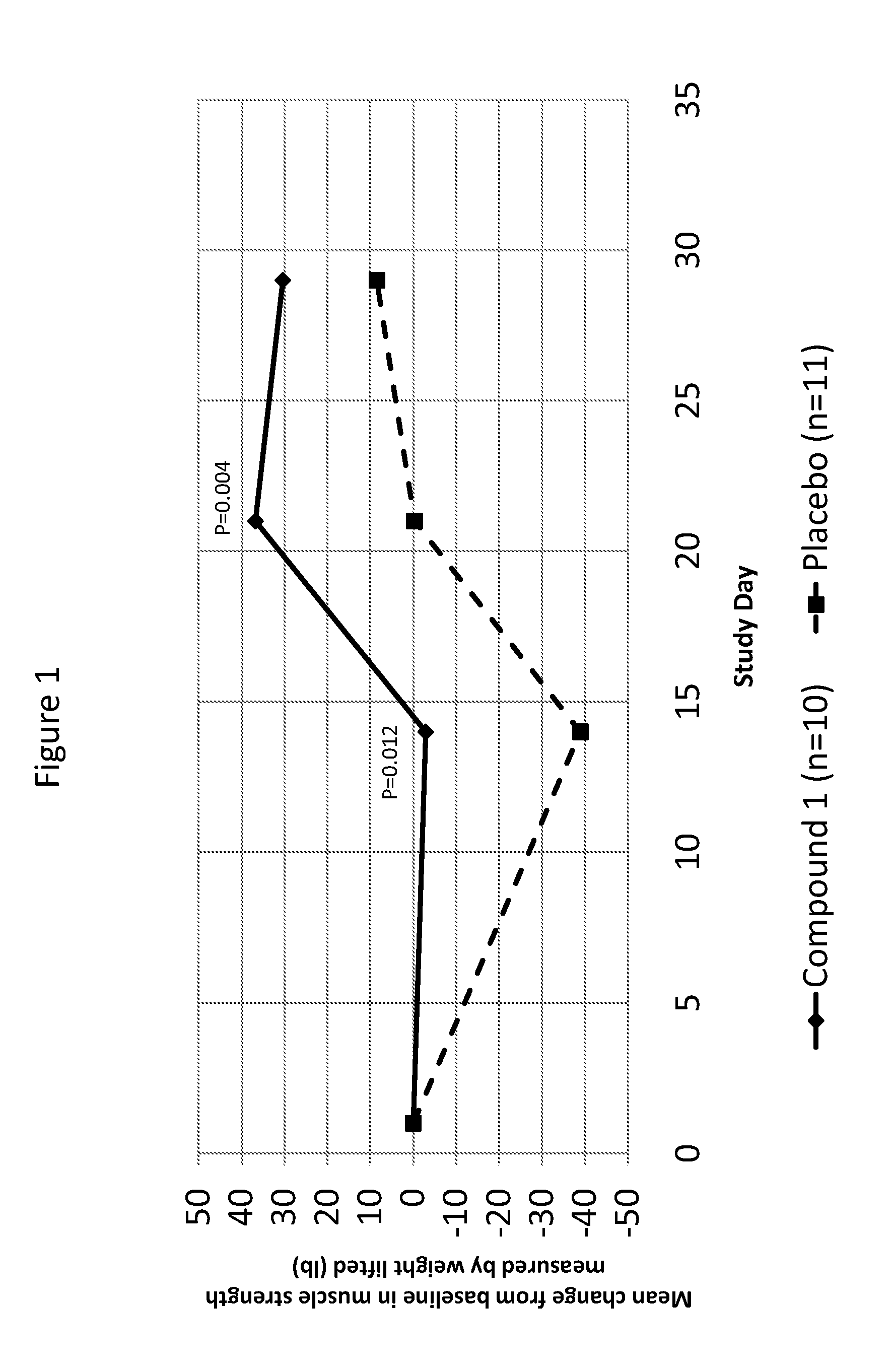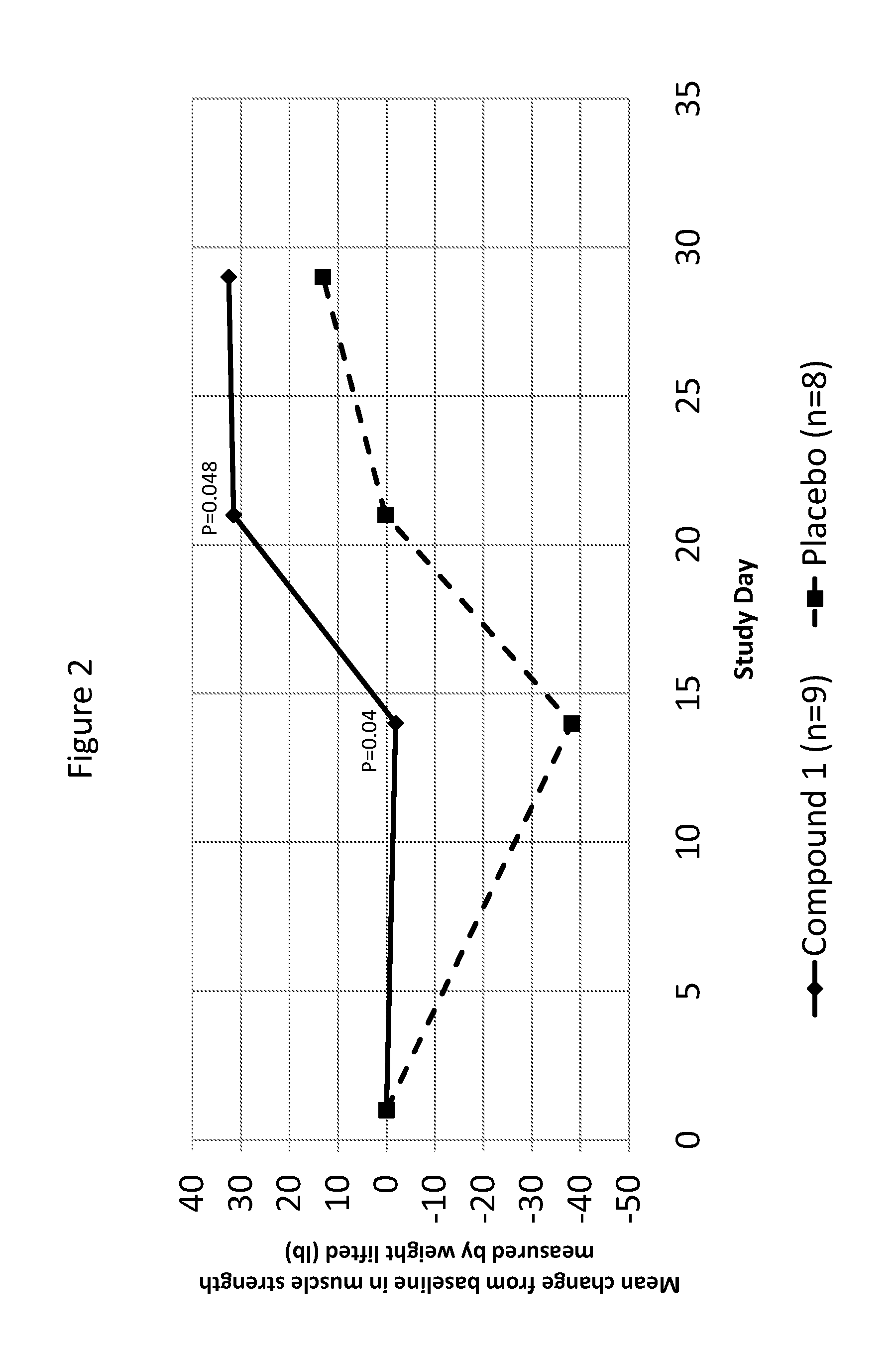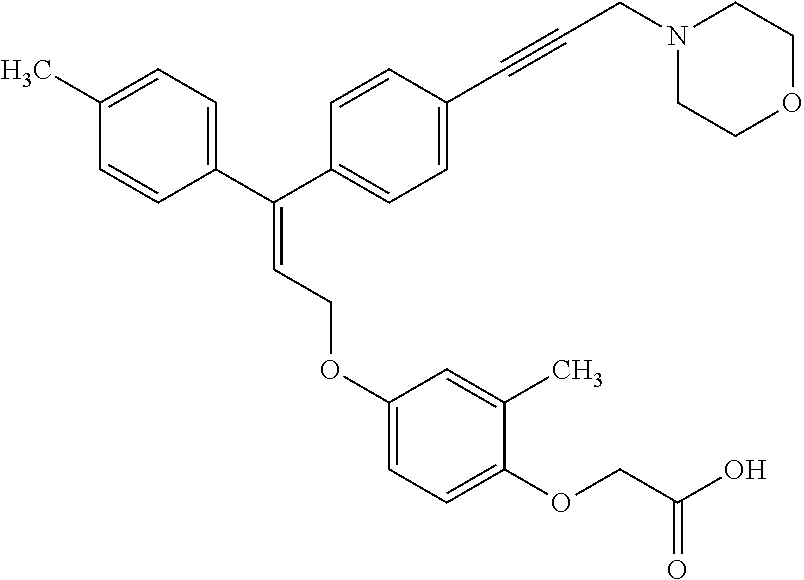Use of a PPAR-delta agonist for treating muscle atrophy
a technology of ppar and delta agonist, applied in the field of pharmaceuticals and medicine, can solve the problems of limited efficacy of existing treatments, contentious expression of atrogin-1 and murf-1 during and few studies have examined muscle atrophy in humans. achieve the effect of improving the treatment of muscle atrophy
- Summary
- Abstract
- Description
- Claims
- Application Information
AI Technical Summary
Benefits of technology
Problems solved by technology
Method used
Image
Examples
example 1
[0177]An experimental study was conducted to evaluate the impact of Compound 1, a PPARδ agonist, on muscle atrophy during and following the end of limb immobilization in human subjects. Except where specifically noted otherwise below, all methods were conducted as described in the protocol above.
Methods
[0178]Methods were generally conducted as described in the protocol. The study was designed as a double-blind, randomized, placebo-controlled, parallel study in healthy male subjects. A total of N=24 subjects were randomized. The number of randomized subjects is lower than originally planned. A total of N=21 subjects had data available for statistical analysis. Despite statistical power below that typically used, statistically significant superiority over placebo was observed for the primary muscle strength variable of analysis.
[0179]The study randomized 24 subjects, 12 of whom were randomized to receive Compound 1 (mean age=42; 50% Black or African American) and 12 of whom were rando...
PUM
| Property | Measurement | Unit |
|---|---|---|
| time | aaaaa | aaaaa |
| time | aaaaa | aaaaa |
| time | aaaaa | aaaaa |
Abstract
Description
Claims
Application Information
 Login to View More
Login to View More - R&D
- Intellectual Property
- Life Sciences
- Materials
- Tech Scout
- Unparalleled Data Quality
- Higher Quality Content
- 60% Fewer Hallucinations
Browse by: Latest US Patents, China's latest patents, Technical Efficacy Thesaurus, Application Domain, Technology Topic, Popular Technical Reports.
© 2025 PatSnap. All rights reserved.Legal|Privacy policy|Modern Slavery Act Transparency Statement|Sitemap|About US| Contact US: help@patsnap.com



